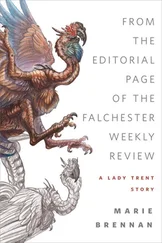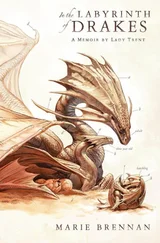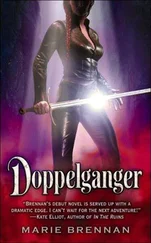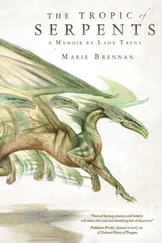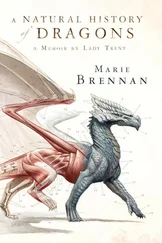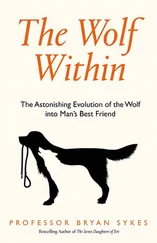Giat Jip-hau dismissed this with a small cut of his hand. “Their use as weapons is secondary at best. But if my enemies see my generals riding into battle upon dragons, the effect on their morale will be enormous.”
Insofar as it went, he was probably correct. That did not make the idea a good one, though. I found my tongue, and used it. “My lord, the Draconeans have spent centuries breeding the mews for their use, in much the same way that humans bred wolves into dogs. The fact that we can command hounds for our own benefit does not mean we can do the same with tigers; and I think it is fair to assume that the gap between mews and whatever dragons you have here is at least that large. If you had a decade to spend on this endeavour, it might be possible; but I presume your schedule is rather swifter than that.”
I should have stopped there. My mouth went on, though, without leave from my brain. “And even if it could be done, I think it should not.”
He fixed me with a steady gaze. “Explain.”
I thought of the rock-wyrms that had attacked the boyar’s men in the Vystrani Mountains, the fangfish that had savaged the Ikwunde, little Ascelin killing the Taisên agent in Qurrat and the sea-serpents thrashing in the waters around Keonga. But Giat Jip-hau would not be swayed by my qualms over my own past actions, nor by my newfound reluctance to see dragons killed for any reason other than sheer necessity. His care was for the future of his nation, not the well-being of a few beasts.
Instead I gave him a practical answer. “Battles are perilous things, my lord; you know that as well as I do. What omen would it be for your reign if these dragons were shot down in the field?”
“It would be the Taisên who shot them, and the Taisên upon whom the blame would fall.”
“Perhaps. But they have not used dragons in battle; their own ministers would argue that you are the one who brought them to that fate. Some would agree with you, and others with the Taisên. It is a great deal of effort for dubious benefit—especially when you might more profitably attempt to train them for another purpose.”
I spoke that last as if I had some plan in mind, held in reserve until that moment. In truth, it only took shape as I spoke; and even then, I hesitated to dignify it with the name of “plan.” But Giat Jip-hau listened with interest as I shared the beginnings of it, and he and Tom contributed elaborations and improvements, and before long, I was committed.
To my part, at least. “I must consult with the Draconeans before I can say anything for certain,” I reminded him.
“Then act swiftly,” he said. “One way or another, we do not have much time.”
Azure dragons—A blessing—The Khiam Siu rise up—The end of the rebellion—A letter—Returning home
The entire plan depended on the assistance of the Draconeans. They entered Tiongau in the small hours of the night, when only Khiam Siu patrolled the streets, and were smuggled into the palace through a servant entrance.
Even traversing the city at night was a shock to them. “I owe you an apology, Zabel,” Ruzt said when Tom and I met them, shortly after dawn. “You told us there were many humans in the world, but I never believed they could exist in such numbers. How many places like this are there?”
“More than I can count,” I said. “And some are far larger than this. But you need not concern yourselves with that just now; I have something to show you.”
The governor’s menagerie was no miserable zoo, with animals kept in iron cages. Instead it was a series of beautiful gardens, with their bars, where necessary, concealed behind trees and flowering bushes. The most splendid of these gardens housed a pair of ci lêng, a species known in Scirling as the azure or eastern dragon; the latter name derives from their natural range, which lies in the eastern part of Yelang, and the former derives from their lovely blue scales.
Our Draconean companions reacted to these with astonished delight. Just as I had told them of the vast number of humans in the world, I had told them of other dragon breeds; and just as my words had failed to convey the true reality of humankind, so too had it fallen short of describing dragonkind. Despite my cautions, the sisters hurried through the gate and into the garden, where they sat utterly still until the ci lêng lost their wariness and came to investigate. There is no sight quite like a trio of previously mythical Draconeans sitting in a Yelangese garden with two azure dragons wending between them like curious cats; and in that moment, I felt as if all my suffering the previous winter had been more than worth it.
But of course we had a great deal to do, and not much time in which to do it. Nor, for that matter, did we have many resources to work with. The governor’s dragon-men were of course no help, as they were all loyal to the Taisên; and Tom and I knew perishingly little about the breeds of western Dajin, on account of having been thrown out of Yelang before we could study more than a few. But the dragon-men had kept books detailing their arrangements, which Thu translated for us, and from this we were able to learn the means by which they fed, cared for, and worked with their charges. Kahhe, who was the best of the sisters at training mews, shook her head over the latter parts. “Is that how humans do it? No wonder you can’t manage much.”
I grinned impudently at her, buoyed by my excitement. “Very well—let us see you do better.”
They set to it with a will, despite certain obstacles. True to Tom’s predictions regarding the mews, our friends from the Sanctuary were too well adapted to high elevations and cold temperatures; the warmth of eastern Yelang in Gelis was as punishing to them as the Akhian desert in Caloris was to me. Fortunately the governor, being a wealthy man, had storehouses of ice brought down from the mountains. The four Draconeans took refuge there during the hottest parts of the day, working with the azure dragons in the morning and evening.
But they pushed themselves to their limits, for Giat Jip-hau insisted on swift action, and with good cause. The Khiam Siu rebellion needed momentum; their victory in Tiongau could not be allowed to grow stale, or the Taisên to gather themselves to resist. The moment of truth was upon us before we knew it.
* * *
It came on a brilliantly sunny day. The last of the resistance within Tiongau had been defeated; in celebration, the Khiam Siu and the people of the city were staging a great festival. Despite the destruction wrought by fighting, the burned houses and the grieving survivors, a raucous procession wound its way to the plaza in front of the governor’s palace. There were drums and fireworks, dancers and priests, and an enormous puppet of a hong lêng, the dragon associated with the Yelangese emperor himself. This was carried by a whole crowd of puppeteers, and when I saw the puppet later, it reminded me a great deal of the legambwa bomu the Moulish had used to chasten me into shedding the burden of witchcraft, so many years before—albeit much larger and more brilliantly decorated.
I did not see the puppet until later because I was not standing with the soldiers on the steps of the palace, awaiting the emergence of Giat Jip-hau. I was with Tom, very gingerly leading a pair of leashed azure dragons through the corridors like enormous greyhounds, and hoping very sincerely that they would not decide to turn against us without warning. The ci lêng were relatively tame, as dragons went, but just as a cat or a horse may snap at its owner, so too may such creatures—with very injurious consequences.
The corridors, though grand, had not been sized for dragons. From behind us came a delicate crash. Tom and I both stopped, wincing. I cast a glance behind me, and saw that the tail of Tom’s dragon had brushed against a vase in an alcove, knocking it to the floor.
Читать дальше






